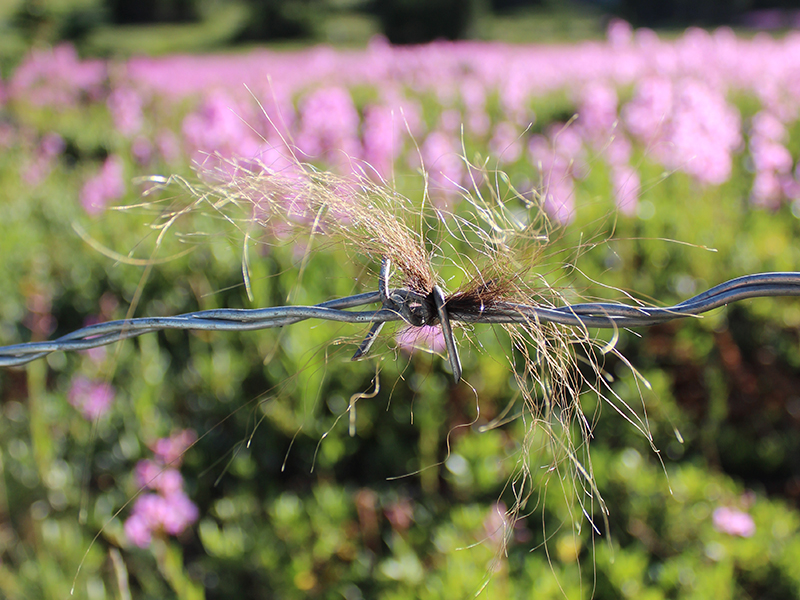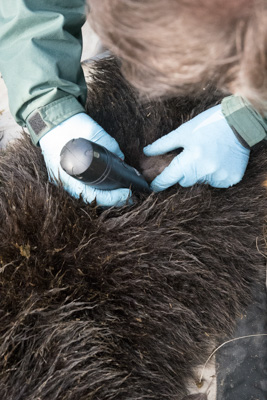Abstract
Recognizing the potential value of steroid hormone measurements to augment non-invasive genetic sampling, we developed procedures based on enzyme-linked immunoassays to quantify reproductive steroid hormone concentrations in brown bear (Ursus arctos) hair. Then, using 94 hair samples collected from eight captive adult bears over a 2-year period, we evaluated (i) associations between hair concentrations of testosterone, progesterone, estradiol and cortisol; (ii) the effect of collecting by shaving vs. plucking; and (iii) the utility of reproductive hormone profiles to differentiate sex and reproductive state. Sample requirements (125 mg of guard hair) to assay all hormones exceeded amounts typically obtained by non-invasive sampling. Thus, broad application of this approach will require modification of non-invasive techniques to collect larger samples, use of mixed (guard and undercoat) hair samples and/or application of more sensitive laboratory procedures. Concentrations of hormones were highly correlated suggesting their sequestration in hair reflects underlying physiological processes. Marked changes in hair hormone levels during the quiescent phase of the hair cycle, coupled with the finding that progesterone concentrations, and their association with testosterone levels, differed markedly between plucked and shaved hair samples, suggests steroids sequestered in hair were likely derived from various sources, including skin. Changes in hair hormone concentrations over time, and in conjunction with key reproductive events, were similar to what has been reported concerning hormonal changes in the blood serum of brown bears. Thus, potential for the measurement of hair reproductive hormone levels to augment non-invasive genetic sampling appears compelling. Nonetheless, we are conducting additional validation studies on hair collected from free-ranging bears, representative of all sex, age and reproductive classes, to fully evaluate the utility of this approach for brown bear conservation and research.
Citation
Cattet, M., Stenhouse, G. B., Janz, D. M., Kapronczai, L., Anne Erlenbach, J., Jansen, H. T., Nelson, O. L., Robbins, C. T., & Boulanger, J. (2017). The quantification of reproductive hormones in the hair of captive adult brown bears and their application as indicators of sex and reproductive state. Conservation Physiology, 5(1), cox032. doi:10.1093/conphys/cox032








